The Royal Navy is exploring the use of nuclear power for its surface ships, with the Ministry of Defence (MOD) issuing a Request for Information (RFI) seeking insights from the defence industry.
The RFI signals the Royal Navy’s interest in understanding how Generation 4 nuclear reactors might be integrated into its fleet.
The MOD has emphasised that this RFI is not a tender but a way to gather information from industry leaders. The request is being conducted in line with the Defence and Security Industrial Strategy (DSIS), which seeks to foster productive relationships with defence and security industries.
The MOD states that any future procurement will comply with relevant legislation, but it clarifies, “No more further discussions with industry are planned at this stage. In the event of any future procurement activity, it would be advertised in line with public procurement regulations on the Defence Sourcing Portal and Contracts Finder.”
The Royal Navy is specifically looking into the possibility of using Generation 4 nuclear technologies, including both larger nuclear reactors and micro modular reactors, for powering large surface ships.
The RFI highlights the need for detailed technical information, stating, “The Royal Navy (RN) is seeking information regarding integrating Generation-4 nuclear technologies for surface ship employment. Exploring scopes for alternative energy paradigms, the Royal Navy is gathering information on energy solutions for powering large surface ships.”
Generation 4 nuclear technologies are the next generation of advanced reactors designed to improve safety, efficiency, and sustainability compared to older models. These reactors focus on reducing nuclear waste, using fuel more efficiently, and incorporating passive safety systems to prevent accidents.
A key feature is the development of smaller, modular designs like Small Modular Reactors (SMRs), which are more flexible and can be deployed in a wider range of settings, including for naval applications. These reactors also aim to reduce the environmental impact of nuclear power while maintaining high operational performance.
The RFI goes on to explain the objective of the information-gathering exercise: “The primary objective is to gather detailed information on GEN-4 nuclear-reactor designs, their feasibility for large surface ships (including support vessels and surface combatants), and the potential benefits and challenges associated with their use.”
The MOD is particularly interested in understanding the technical feasibility of integrating nuclear power into existing and future naval vessels, as well as the operational implications this might have.
In addition to technical feasibility, the RFI requests information on several key areas. These include detailed technical specifications of Generation 4 reactors suitable for maritime use, their power output, and safety protocols.
The MOD asks for “Detailed descriptions of Generation-4 nuclear reactor designs suitable for maritime applications,” as well as information on “power output, efficiency, and operational parameters.” Safety features are also a primary concern, with the document seeking information on “safety features and protocols inherent to Generation 4 reactors.”
Beyond technical details, the MOD is also exploring how these reactors could be integrated into ship designs. The RFI asks for responses addressing “requirements for integrating Generation-4 reactors into the design and construction of large surface ships.” This includes how modifications to existing ship designs would be required to accommodate nuclear power systems, as well as the research questions that need to be addressed to make these technologies viable for naval use.
The MOD is also interested in understanding the broader implications for the fleet, such as crewing, training, and maintenance, asking for information on “implications for wider Defence Lines of Development (crewing, training, maintenance, supporting infrastructure, and other such effects).”
The RFI also touches on environmental and regulatory considerations. The MOD seeks industry input on “lifecycle-sustainability assessments and mitigation strategies for nuclear-powered ships,” as well as on the “key regulatory frameworks governing the use of nuclear power in maritime settings.”
This demonstrates the MOD’s awareness of the need for thorough environmental and regulatory planning as it considers the potential introduction of nuclear-powered ships into the Royal Navy.
This information-gathering exercise could be followed by further engagement with the industry. The RFI states, “Following viability of returns, the Royal Navy may hold a forum to explore key details from selected responses and/or an action learning event.” This would provide the MOD with an opportunity to further explore the practicalities and challenges of using nuclear power in its fleet, as well as gain insights from industry experts.
The deadline for responses to this RFI is October 8, 2024, at 22:59.
While no decisions have been made regarding the procurement of nuclear technologies at this stage, the MOD’s request for detailed technical information indicates that the Royal Navy is seriously considering how nuclear power could fit into its future fleet. As the RFI explains, this initiative is part of the Royal Navy’s broader effort to gather information that will inform its future strategic decisions.
Nuclear at sea?
Nuclear-powered warships have been in service with several navies around the world for decades, although they are more commonly associated with submarines. The United States Navy operates a number of nuclear-powered aircraft carriers, including the well-known Nimitz and Gerald R. Ford-class ships.
These carriers can remain at sea for extended periods without needing to refuel, thanks to their nuclear reactors, which provide them with almost unlimited range. Similarly, France’s Charles de Gaulle aircraft carrier has been nuclear-powered since it entered service in 2001.
While most people think of nuclear-powered submarines when it comes to naval nuclear propulsion, it’s not unusual for surface ships to run on nuclear power in some of the world’s major fleets. Submarines, however, have been the primary beneficiaries of this technology. Their ability to stay submerged for long periods without surfacing to refuel gives them a significant operational advantage. The Royal Navy, for instance, operates an entirely nuclear-powered submarine fleet, including its Vanguard-class submarines, which carry the UK’s nuclear deterrent, and the Astute-class attack submarines.
Despite this, the UK has never operated a nuclear-powered surface ship. All of the Royal Navy’s surface fleet, including its aircraft carriers, destroyers, and frigates, are conventionally powered. The RFI issued by the Ministry of Defence represents a potential shift in this approach as the Royal Navy considers the possibility of integrating Generation 4 nuclear reactors into large surface ships, such as support vessels and warships.
Through this RFI, the Royal Navy is seeking input from the defence industry to explore how nuclear power—used so effectively in submarines—could enhance the capabilities of its surface fleet. The move could allow ships to operate for longer periods, reduce their reliance on fuel supplies, and potentially transform how the Royal Navy operates at sea.




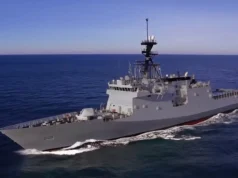
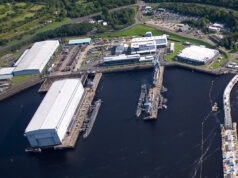
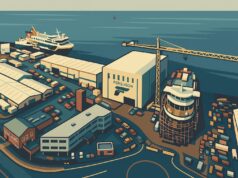

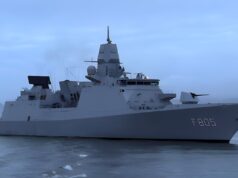

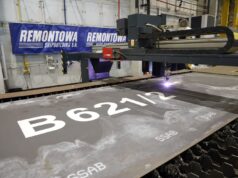
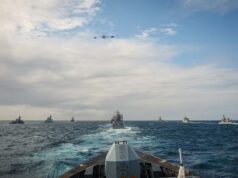


Simultaneously rumouring cuts and rumouring nuclear powered ships is the mother of all oxymorons. Just five more T31s and the full compliment of FSS would do for me, keep the nuclear ships.
One hundred per cent…🙂
Totally. Some T31s would be very useful right now in the Gulf area. Wonder if they’re crazily thinking of retrofitting the carriers with these after seeing what the new French carrier variant might be able to do?
Rather spend the money on some aircraft then at least they would become aircraft carriers. Or CATS and TRAPS so that cheaper aircraft could be flown and maintained with better availability, specially a tanker and AEWAC.
I guess this is just a sop to Ed Millipedes’ climate change rantings.
This really is pie in the sky. Even if it were possible where is the money coming from. Not from this lot.We should be more concerned with what’s about to be cut. Not pipedreams.
and a couple more astutes please
The US Navy used to have nuclear powered cruisers to escort their carriers, but even they found them too costly to operate. Things will have to have changed considerably for the RN to even contemplate being able to afford such things.
SMR might be the reasoning behind that?
Unproven technology as far as I’m aware. Rolls-Royce was rumoured to be trying to get rid of its SMR business recently.
RR sated it would divest if UKPLC didn’t hurry up and make some decisions. Usual agonising, position papers, think papers, interest groups, indecision, Treasury interference, not wanting to upset the Chinese too much…total mess central…just needs a Boris style decision TBH.
I’m not fan of Boris but he was distinctly better at getting on with things and making the big decisions. Mainly because he liked the grandstanding that went with big decisions!
risky sunac was the opposite
Yes but he was at best fifty fifty right Vs wrong because he had no understanding of the decisions that he was making.
Hi SB. This smacks to me as a bit of a RN asymmetric political warfare. Do a feasibility study, the costs scare the living daylights out of HMG and everything else looks positively good value.
SMR works as a cost benefit only when compared to a Civilian PWR power station, stacked up against an efficient modern power plant such as an MT30 / MTU it doesn’t.
Anything that is Nuclear has invisible costs that are often ignored, maintenance at specially equipped sites, de commissioning and then ??? More Nuclear waste.
I read the headline and just laughed when I saw the word “soon”.
I just smiled a wry smile.
junk that will take years to get rid of after they are part of a future cull on our service were still struck with the 18 retired submarines at rosyth and Devon port. waste of brain cells put the idea in the same fantasy world box as laser weapons and motherships. and with all the other things that disappeared as soon as anyone heard about them
The Government are probably doing more than contemplate it. The RN will probably have to pay the ULEZ charge for going down the English Channel.
The technology has changed considerably since then and with RFA unions flexing their muscles the idea is a good one. The best concept is being able to retro fit into existing ships as well as new builds. Sadly, it all sounds like a plan for 2050’s and not in this cash strapped period in our history.
Is the country that cash strapped compared to previous points in history when Governments spent an absolute fortune.
Not really.
But I’m not smelling it going on defence. It will be the Brownian motion of money towards schools’n’hospitals and buyer bribes.
The idea of ‘growth’ is for the birds.
Reeves is at risk of being worse than Kamakwasi.
We’re not crash strapped . We’re not good enough using what we have you only have to Google where the foreign aid goes to and the amounts that bgo to the winners of t5 mugs lottery. I did to same with the BBC licence money use and I nearly kicked the TV out of the house
AH but you know who can afford to operate Nuclear Powered Cruisers? 🇷🇺
Nuclear Fission reactor is a non-starter. SMR might be a possibility but it will be out of date by the time it is commissioned. Fussion reactors are definately the future but the Government hasn’t yet thrown it’s weight behind them for commercial use yet. I think this seems like a simple carbon-zero wish list project and they have completely lost the plot.
Anyone moving forward in the Nuclear space will be focused on making themselves billionaires with Nuclear Fussion rather than p*ssing around on some vanity project.
Might have more credibility if you could spell ‘fusion’ correctly.
But not a lot. Nuclear fusion reactors have been in development for a long, long time (60 years?) and it will be a long, long time before they materialize as a practical solution.
And before folks tell me “fussion” is the correct spelling – nobody has used that spelling for donkey’s years.
You’re just being fussy. Or is it fusy 🤔
foozie
Grinch there is a lot of work going on in that space. We know the energy is there we just need to harness it successfully. It really hasn’t been in development for a long time. It was parked in favour of fission and that is where the effort and money went. It is only relatively recently that funding has shifted back to fusion.
I am generally suspicious of people who pull you up on grammar or spelling. It generally indicates a lack of substance to their arguments. In truth this new technology may never happen but my money (and a lot of other people’s) is that it will and relatively soon. Assuming it does then it resolves the power issues for the entire planet all 8.2.bn Billion people not just where the sun shines or the wind blows.
Fusion has been in development for decades .Fission had nothing to do with it. Fission is simply easier.
JET has been pushing the boundary for 40 years and at a huge cost. A lot of the tech such as fast computers, super conducting magnets just didn’t exist a decade or so ago, JET has moved forward on the shoulders of dozens of related technologies have.
What has happened recently is that several commercial companies are now in the game. They are flexible, nibbler and do not carry the political baggage that is dogging and hamstringing ITER.
Fission gobbled up all the funding probably, as you said, because it was easier but the problem is it is not safer – infact it is not safe at all – it is pretty dangerous. Fusion on the other hand is far safer and produces far more power from raw materials which are readily available.
You point out that computer power, super conducting magnets etc. can appear in a decade yet for some reason a significant breakthrough on fusion is impossible.
Also it is exactly those commercial companies that are likely to produce results and much quicker than any Government initiative.
Fission didn’t gobble up funding nor is the reaction dangerous . Fusion as I said is not easy and has moved forward with many related technologies including computer power, superconductor development, magnet design etc
👏👏
Fusion is 40 years away, always has been, always will be.
Yes the joke was that Fusion was always a decade away but it is now a question of IF not WHEN and it has already been achieved on a very small scale by the Americans at the national Ignition Facility. But I very much doubt that can be put in a ship.
I don’t think anyone knows at the moment if it can be put on a ship.
I seem to remember something about a certain computer company believing that only massive mainframe computers were possible. They didn’t think there was much of a market for computers as they would only need 3 in the US, 2 in Europe and one in Austrailia (or something like that).
I also remember sitting in on a guest lecturer at university say we would never get below a million devices per chip. That went out the window in under 3 years.
However this involves physics which as the well renowned engineer once said “ you canna change”
Certainly there are several smaller reactor than ITER, we are a long long way off condensing the reactor and associated gear into. Ship
Michael we are at the early stages of fusion. We do not really know what is possible and what is not. Personally I would not rule anything out. History has taught us that what seems impossible today can be very possible tomorrow.
I know more than most, although I would not rule it out completely. Getting a functioning fusion reactor into a ship is almost as big a challenge as making Fusion a viable energy source. The effects of the magnets alone on the vessels structure would be a considerable challenge.
I’m loving this conversation. Personally I think fusion isn’t far away I’m 48 hope to see it before I pop of. Look a lot of things we seen as fanciful at one time or another remember that mark b is right. But that’s just my opinion.
Sorry excuse how I’ve written that hope you get what I’m saying because I’m looking at it now and it looks like I’ve got a man crush. But trust me lol 😂 thaTs not how it was supposed to come across
We don’t even know if an industrial fusion reactor can become a reality on the ground.
Let alone reactor for ships.
We don’t need bling-bling in the military.
Fission is a tried and tested technology that we master.
Yep. But why are they looking at nuclear power ships anyway. Simply because they want to look good and feel good by moving to carbon free fuels for absolutely everything.
If they chuck out fission for fusion it will be because it is safer which will be the next consideration. But that probably won’t be for awhile because the Labour Government will probably faint at the cost of going nuclear.
Fusion relies on a completely stable environment for containment of the plasma, it is inherently electricity hungry and very, very heavy.
And you think it can be fitted in a ship ?
Check out projectile fusion, which works by striking an encapsulated fuel pellet with something that compresses it, another projectile perhaps, or lasers. Gain has been achieved in Oxford by First Light (using a railgun approach), and it’s a lot smaller than a torus. Current designs still aren’t useful for a ship, but that’s to do with the heat collection process involving a gravity-dependent falling curtain of liquid lithium. There are also still massive issues to overcome, so don’t hold your breath. nevertheless, it’s not inherently impossible for this to power a ship one day.
And that my friend is the problem, it’s great but is it usable in a realistic timescale. This is a RFI for info in this timescale and nuclear isn’t cost effective anytime soon.
Simple reality is that if it wasn’t down to National pride the USN would have ditched the CVN a decade ago. You just need to look at the earlier iterations of the QE’s to see that a 65K tonne CVA with a modern GT / DG mix can produce sufficient power for EMAL and just about anything else at half the cost.
I suspect the timescale is more down to global warming than anything else. Nuclear will need to be in the mix by 2050 in one form or another possibly both. The UK could become a world leader in Nuclear. Power generation could solve our economy in a big way. This is probably more than just about defence.
Fusion has made considerable strides in the last decade and it is certainly no longer if but when but they are at least 15 to 20 years away from a commercial reactor at best and navalising it is another big step.
Getting it small enough. Plasma behaviour in a moving reactor , the weight . Having electronics near a massive magnetic field .
The more I think, the more question I can think of.
Yeah but as explained by others above there is more than one way to skin a rabbit (if it can be skinned at all).
There are several ways to achieve fusion potentially however all are way to big/ too heavy to get into a ship plus the other problems of having huge magnetic fields interfering with other ship functions and the phrase is “ skin a cat”
Given the recent and currently projected timescales involved in conventionally powered ships for the RN, as extensively discussed on this website, the headline that we may be operating nuclear surface ships “soon” is beyond laughable. Plus anything with the word “nuclear” in it means yet more hurdles to overcome: look at the history of the new generation of nuclear power stations which have now been”on the way” for a quarter century and nothing is even close to operational.
I won’t hold my breath.
Can we just increase recruitment and retention, please, Admirals, and crew the assets we have, before going all Battlestar Galactica with nuke powered ships.
I just checked it isn’t April 1st and that Borris isn’t back in charge (it’s just like one of his ideas).
This has been looked at before and it’s always been a dead duck. It was originally looked at in the early 60’s for CVA01, then a 2nd look in 1973 as a result of the Arab Oil Embargo. Mind you that was a mad panic as they looked at some even wackier ideas as well, wind power using Flettnor Roters and even going back to Steam coal burners.
Again it was looked at in the early stages of the QE project, it always seemed a simple and obvious answer to leverage existing tech into a large surface ship, then the reality sets in and the Bean Counters go into spasms of laughter on the floor. I always thought that’s where the idea for the Cadburys Smash advert came from. 🥴
Can it be done ? Yes of course it can, you could use a Marine version of a SMR (multiple ones) or even do what France does and use a couple of Submarine PWRs, the engineering is doable.
However the direct cost is eye watering and it isn’t something you would use in anything smaller than a Carrier or FSS. The indirect costs would be almost as bad, you would definitely need a much larger and accessible drydock with a Nuclear licence for maintenance (probably 2, 1 for refuelling and another for anything else).
And after a 50 year life, we have to decommission them safely and do something with the waste.
The feasibility exercise should just involve getting on a train popping under the channel and then taking the heads of the French MN out for a boozy lunch. At some point start asking what the costs of PA-NG are, and the effects on France’s defence budget.
It’s a nuclear powered defence budget hoover.
😄 Love the Smash reference mate. Got to be of a certain age to know that one.
Sailor Boy, go check it out.
The way the MoD spend money, it sounds perfect for us. 🙄 I hope they’re not throwing another billion at it like they are with the hypersonics. I wonder if that ones a goner, BTW, easy save?
Have done as you requested.
Ermm…
Had to turn on captions to understand what was being said, but worth it. Some excellent lines: Do you know what this means [looking at Smash packet]? There is intelligent life on Earth!
They don’t do TV commercials like they used to.
This was 70s I think.
I was lucky enough to be alive in the 1980s. The country was different, the music was amazing, the REAL Star Wars was on in the cinema.
Best ever decade!
And we had large armed forces!
and the fashions were dreadful
and the hair Andy!
So what ? Beer at less than £1 a pint, including Bass actually brewed in Burton upon Trent.
Of course everyone will have their favourite decade, but the 60’s really did change everything. I used to hop on a train to London as a 13 year old with my mate (35 mile trip) and go visit Kings Road, High Street Ken and other such hip places. Not sure I’d let a 13 year old do that now, I don’t even feel safe as an adult in that dump now. Really was a cool decade. Your right about Star Wars though.
My wife is from Hammersmith, and grew up around High St Ken. I think she’d agree with you.
Best music decade for me.Two recent gigs for me I thourough enjoyed
Likewise! I cannot stand the modern stuff and these manufactured pop groups who can hardly play an instrument between them.
In all fairness the Astutes are nuclear and they are not that crazy expensive.
The main issue isn’t building them it is, as you say, maintaining and decommissioning them.
ATM as others have said the manpower crisis is the biggest threat to a fighting fleet.
Yep I know about the Astutes, even without the HMG mess ups they are very cost effective boats. If it wasn’t for the short sighted, stupidity of UK Politicians we could have had far more for exactly the same budget 😡
But the huge difference is scale, we are struggling to maintain a force of 7k tonne boats, so how do we deal with a CVNin a small island.
Devonport hasn’t the depth, Portsmouth is probably too populated, Clyde is SNP sensitive, Rosyth sorry but it’s way too small and as for H&W it’s ideal in every way except it’s owned by H&W holdings.
The elephant in the room is is that no one has managed to justify any cost effective ship smaller than a 75k tonne carrier.
Perhaps an AUKUS Pillar 2 initiative w/ a target date of the 2050’s-2060’s? Opportunity to enhance tech base, w/out unduly burdening R&D budgets of participants? Probably result in benefits for civilian applications.
maybe T83 will be
Nope no chance ! The infrastructure costs just kill it stone dead.
Absolutely
Second article on the same RFI. Why?
Soon?!
On a cosmic timescale, it’s all soon
too many acronyms on here, I forgot what a of people on here 5 talking about lately 😞
I think the Seaborg Molten Salt Reactor could be intersting for large RN surface ships. Although it was aimed at being a power barge to be towed where needed, it could provide a power source for all electric ships. The Uranium based fluoride fuel salt cannot meltdown or explode, it cannot release radioactive gasses to air or water, and it cannot be used for nuclear weapons.
Power density / mass / what happens to the molten salt in high sea states?
Quote” The CSMR fuel is mixed in a liquid salt that also acts as a coolant, which means that it will simply shutdown & solidify in case of emergency”. NEI 14 Sept 2023
Yes, I know that.
However, you do have tiny issue of molten salt sloshing around and the effects that will have on the stability of the vessel.
Also what happens if the reactor vessel is damaged due to action or accident and molten salt starts to fill the bilges?
Are molten salt water steam explosions OK? Those kill people in steel works.
On land it is a different story as you can have huge containment and an earth berm. Job done.
Well, it is a compact reactor so should not cause stability problems in a large surface ship.
Not sure they are going to have many replies. Not many companies do nuclear and if they do they know the true cost and will wonder if their potential customer can afford it.
I suppose “may” covers a multitude of sins! Let’s be honest, this isn’t happening.
I seriously hope not! As soon as we have major naval conflict, sunk nuclear powered warships contaminate all the worlds seas & seafoods with radiation, as though they’re not polluted enough already. Also for all the claim of “unlimited range”, crews need feeding, so resupply essential still, plus loads of other stuff, from lubricating oils to spare parts & munitions are needed, so RAS vessels or port calls are still essential. Plus they’re very expensive. even decades after decomisioning, very complicated to dismantle & clear up.
How many decommisioned, long retired of our nuclear powered RN subs have been fully & safely dimantled so far? None?
Soon, are drugs being used somewhere?
Maybes someone in the new party has found Gove’s secret stash in downing street!
It has to get out of the MoD first.
Who knows what was brought back from the Afghan in the crypto wagons?
nothing like what the Americans left behind.
columbian marching powder without doubt
Only realistic explanation is the possible introduction of laser weapons which require a sever energy uplift to operate, maybes a small reactor is the potential thinking to power the electronics and electronic weapons onboard?
laser weapons? fantasy. years and billions have been thrown in the dragonfire myth, but apart from the occasional picture there’s nothing. where is my taxes being spent? i hope it goes somewhere decent and not into a shady black area 41type budget.
Well lets see, it is new tech so they arent exactly going to be publishing the details on the BBC and it is well known they are very energy intensive.
Shorter term all the electronic systems, newer radars, sonars, jamming tech etc etc might simply be consuming much more power than can be quietly generated onboard.
Who knows, seems a silly idea on the face of it.
Oh dear. This is a very bad idea for all the reasons I have mentioned repeatedly.
I’ve just been made the leader of a flight of flying 🐷…
It’s not the cost of the reactor on it’s own. It’s just the incremental cost of having maybe 4 reactors for the 2 QEC’s on top of the 11 sub reactors and the entire UK nuclear industry that we already have. Then compare that to the cost of a whole extra ship carrying fuel and the cost of all that fuel over the life of the ship.
The QEC carries 5,000 tons of fuel for 10,000 nm. A nuclear powered one could deploy faster to far away places whilst also carrying enough fuel for escorts and aircraft. Unfortunately we can’t afford to change it now.
I had to check the date to see if it was April fools.
As someone who has been involved in both sides of the nuclear industry what the h**l are they thinking about putting it in.
Frigates are two small, retrofitting it to the carriers is just plain bonkers !!
The T83 maybe !!
This makes zero sense.
Tides.
Meaning?
Put the reactor in a Tide class to generate artificial fuel for the rest.
And then you get to the big issue in the U.K where does the waste go ? To be honest I spent 40 odd years in the industry and until we actually commit to building a proper storage site we are just playing Russian Roulette.
For the very small amount of intermediate and high level waste, above ground storage in properly constructed containers and facility is perfectly acceptable and certainly less of a risk than the millions of equivalent tons of co2.
Given the number of surface ships that might be suitable for nuclear power you are talking maybe double the waste the sub fleet is generating, which is a drop in the bucket compared to the civil sector generated waste.
They are certainly not talking about retro fighting the carriers. The T26 are unsuitable , the T31 are unsuitable. The only vessel on the Horizon which may be big enough is the T83 .
The problem is Historical and the sooner they get long term storage sorted out the better. They just need to decide on a site and get on with it and not just keep kicking the can down the road.
I get what you say about surface storage, but concrete and steel decay regardless of how well it’s constructed.
If we are serious about getting to net zero then Nuclear has be a large part of that long term plus there is the unmentioned Boomerang in the AUKUS treaty.
Both mean more waste to reprocess and eventually store.
The model should be based on Finlands Onkalo facility, it’s impressive, secure and reasonably priced.
I do not disagree , but we both know the political dynamite it would be .
In a controlled environment, concrete and steel can be kept very stable
I think it would be reasonable to delete the word “soon” from the title!
This is just a prudent information gathering exercise, the RN hasn’t seriously considered nuclear powered surface warships since the early 1960 and three generations of nuclear powerplant later it is sensible to refresh the files. Unless something astonishing comes to light from the RFI process, the first RN warships that could plausibly have a business case for nuclear propulsion are the QEC replacements. But even preliminary studies won’t start until the end of the 2030’s, with an expected in service date of the late 2060’s!
I’m slightly puzzled why they have gone the public route, rather than just have a quiet dialogue with the various agencies and commissions funding and running Gen IV reactor projects? Or maybe they tried that and got no where, and so are hoping that suppliers such as R-R, Framatome, Westinghouse Electric and General Atomics will be more helpful. But seems unlikely.
I think somebody in the RN was bored and decided to have some fun.
ridiculous Idea. the debacle around getting rid of the old submarines at rosyth and devonport added to with bishops. would be a nightmare scenario
Not really a debacle , just something the RN kept kicking down the road due to lack of funds.
The US have zero problem. The hack off everything in front of the reactor compartment and dispose of conventionally . Hack of everything after, dispose of the same way. The reactor compartment the stick in a long deep trench in the desert. I don’t think they even bother to remove the fuel.
“may soon be operating” soon ? …. it is going to be a couple of years until the first T26 and T31 are in service plus the build backlog to complete those fleets.
Sounds daft at first thought but having had a think maybe not.
the cost of installing nuke propulsion on carrier was probably costed on having it similar to a sub, i.e propulsion via steam turbines/gearbox etc.
Carrier now having an electrical propulsion system does not require this, its a reactor connected to electrical steam propulsion, this is fed into the system similar to the diesels/gas turbines.
the cost of the equipment is also now known, its either 1 or 2 dreadnought ssbn reactor systems.
the cost of disposal is also now know due to the decommissioned subs going through it (very slowly but hey carrier would be around for another 30 years).
so the only unknown is the install cost.
then factor in the cost of fuel/tankers/rfa/maintenance for 30 years.
whats the cost difference then?
plus you get more power, more redundancy. 1 reactor has 2 steam generators, 2-4 turbo generators to make electricity, all cross connected and carrier would likley have 2 reactors anyway.
you will need to leave some diesels, gas turbine alternators? maybe keep one.
space used for diesel storage could be used for other things, including stores/avcat.
thus giving longer time at sea if required.
you could even install steam driven evapourators for demin water.
OK maybe I have missed something, but I do not understand from the article what are the reactors for. Are they for main propulsion, cruise propulsion or electrical generation for ship electronics or a combination.
The reason for my confussion is the diffrence in reactors so as an example for main propulsion and electrical generation of one of our carriers you would need something between the US Navy A1B and A4W reactor generating about 500-600MW thermal for 150,000 shp to the props and 100-150 MW electricity. These are big heavy units something in the region of 100-130sqm footprint and a thousand tons+ with shielding. If on the other hand they are for cruise propulsion for the carriers and main propulsion for the T83s then a PWR 3 or two would be ideal. Yet if it is only for the ships electronics and future potential weapons such as laser then a Rolls Royce Micro reactor would do the job. Micro reactors could be useful to the Armed Forces in general, transportable they could be deployed with the RAF or Army to generate power in remote operational locations.
So unless someone says what they are for there are many solutions. Then comes the further issues, nuclear engineers, operational cost, operational maintenance. I can see the advantage but I also see the issues. Is it the way forward, possibly but we would need to build a complete infrastructure base to convert to a nuclear powered surface fleet.
The UK carrier’s are propelled by 4 electric motors, so prime movers (generators can be anywhere) as no direct linkage to propulsion. current installed power generation with 4 diesels and 2 gas turbines is around 120mw. probably uses around 90mw with everything running at full speed, spare capacity in case some prime movers are down for defect/maintenance.
So 2 x pwr3 could easily replace all the prime movers. As these are currently fitted to 2 of the new dreadnought ssbn then costing should be easy to figure out. training facilities for ssbn could also be used by carrier staff.
if more power is required for future capacity then the RN may have problems, bigger diesels could be fitted (at great expense) but the gain would probably be another 10-20 mw tops. Gas turbine power improvement would be…. problematic for many reasons and probably cost more than the reactors 🙂
so if more power is required then reactors are probably the best option, this would allow keeping of the gas turbines and a small diesel or 2 as well. (assuming they want to)
I think going nuclear for the RN warships is an excellent idea. For a start we won’t have enviomentalist screaming at Fossil Fuel use for RN ships.
it will also bring to an end the cost of oil powered warshhips. when they are actually at sea that is.
Look at the T45 – With conventional propulsion, the cost of keep trying to sort that.
Cat&Trap of course carriers should have this. tied to F35B and it’s shortcomings like ‘range’
Shame this was not thoughr of before the Carriers and T26 got built or started to get built.
No real worry for those who don’t agree – Labour led by Starmer may well cut funds to the RN. So this probably is just a dream.